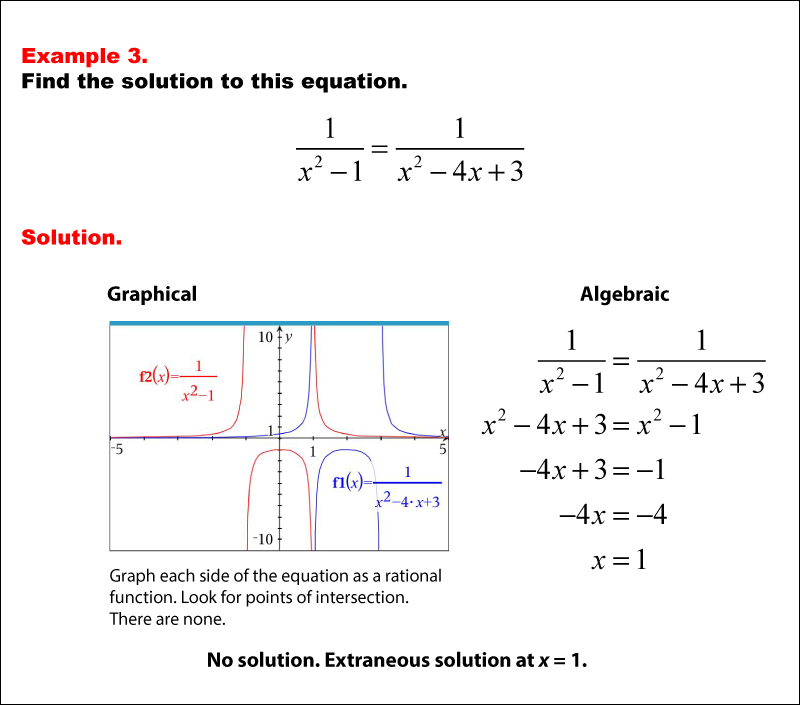
Display Title
Math Example--Solving Equations--Extraneous Or No Solutions--Example 3
Display Title
Extraneous Or No Solutions--Example 3

Topic
Equations
Description
This example showcases an equation that appears to have solutions but actually has none, or has an extraneous solution. The solution typically begins with standard algebraic manipulations. In this case, one might start by multiplying both sides by a factor. This step, however, can introduce an extraneous solution if not handled carefully. The resulting equation after simplification might be a quadratic or higher-degree polynomial equation. Solving this equation using factoring, the quadratic formula, or other appropriate methods might yield solutions that appear valid at first glance. However, the critical step in this example would be the analysis of these solutions. When substituted back into the original equation, it may be found that none of the solutions actually satisfy it. This could be due to division by zero in the original equation or because the algebraic manipulations introduced solutions that don't work in the original context.
For a complete collection of math examples related to Solving Equations with Extraneous or No Solutions click on this link: Math Examples: Solving Equations with Extraneous or No Solutions Collection.
| Common Core Standards | CCSS.MATH.CONTENT.HSA.REI.A.2 |
|---|---|
| Grade Range | 9 - 12 |
| Curriculum Nodes |
Algebra • Radical Expressions and Functions • Radical Functions and Equations • Rational Expressions and Functions • Rational Functions and Equations |
| Copyright Year | 2020 |
| Keywords | extraneous solutions |